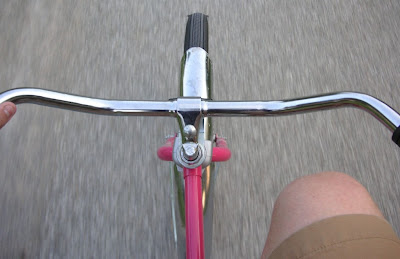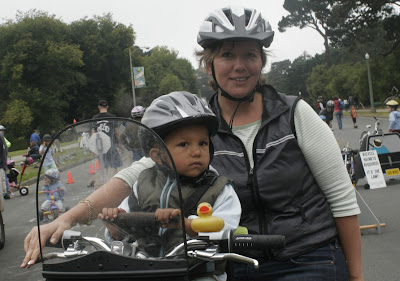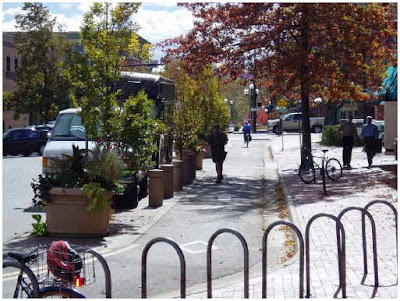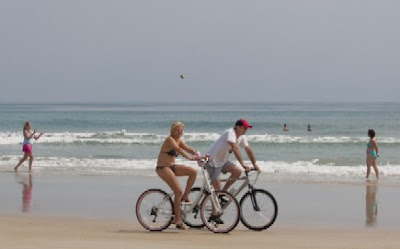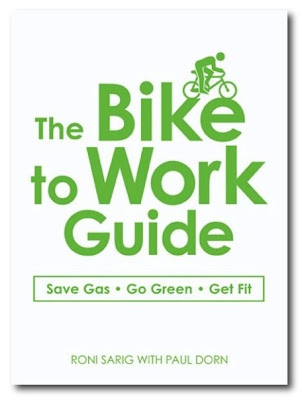 From the Roseville Press Tribune (California), 09.29.07:
From the Roseville Press Tribune (California), 09.29.07:
I think I'll ride: Bicycle commuters take to Roseville streets, two wheels at a timeInteresting article from the fast-growing Sacramento suburb of Roseville, where the bicycling community appears to be straddling the "facilities or accommodation" divide (i.e. advocacy pushing for bicycling friendly infrastructural enhancements, or trying to educate cyclists to adapt to challenging conditions.)
Excessive fossil fuel consumption and an out-of-shape populace are two hot-button topics on peoples' minds these days. But there are some Roseville residents taking action on both issues at the same time--and they have the city behind them.
With more and more of the local workforce commuting by bicycle, the city has stepped up its efforts to provide them with safe and convenient resources.
Pascal Joly makes the 8-mile round trip commute from his downtown Roseville home to Hewlett-Packard just about every workday of the year.
"I am more apt to drive to work because of the heat instead of the rain," said Joly, who grew up in France and sees the challenge Roseville faces in becoming a bicycle friendly city. An avid participant in BikingRoseville, Joly realizes that transforming a car-based culture such as ours does not happen overnight.
It's more like riding a bicycle uphill in high gear. It doesn't happen fast. With city hall behind you, though, at least people aren't pedaling backwards.
"Lots of people think of biking as an off the street activity," said (David Allen, of BikingRoseville). "I see it as a means of transportation, not just recreation. It's great exercise and it's easy on the wallet, but it's also a great way to get around."
Around your neighborhood and around your town. A way around polluting your environment and, hopefully, a little less around the waistline. (Read more.)
Image: Web capture.
Visit: Paul Dorn's Bike Commuting Tips




